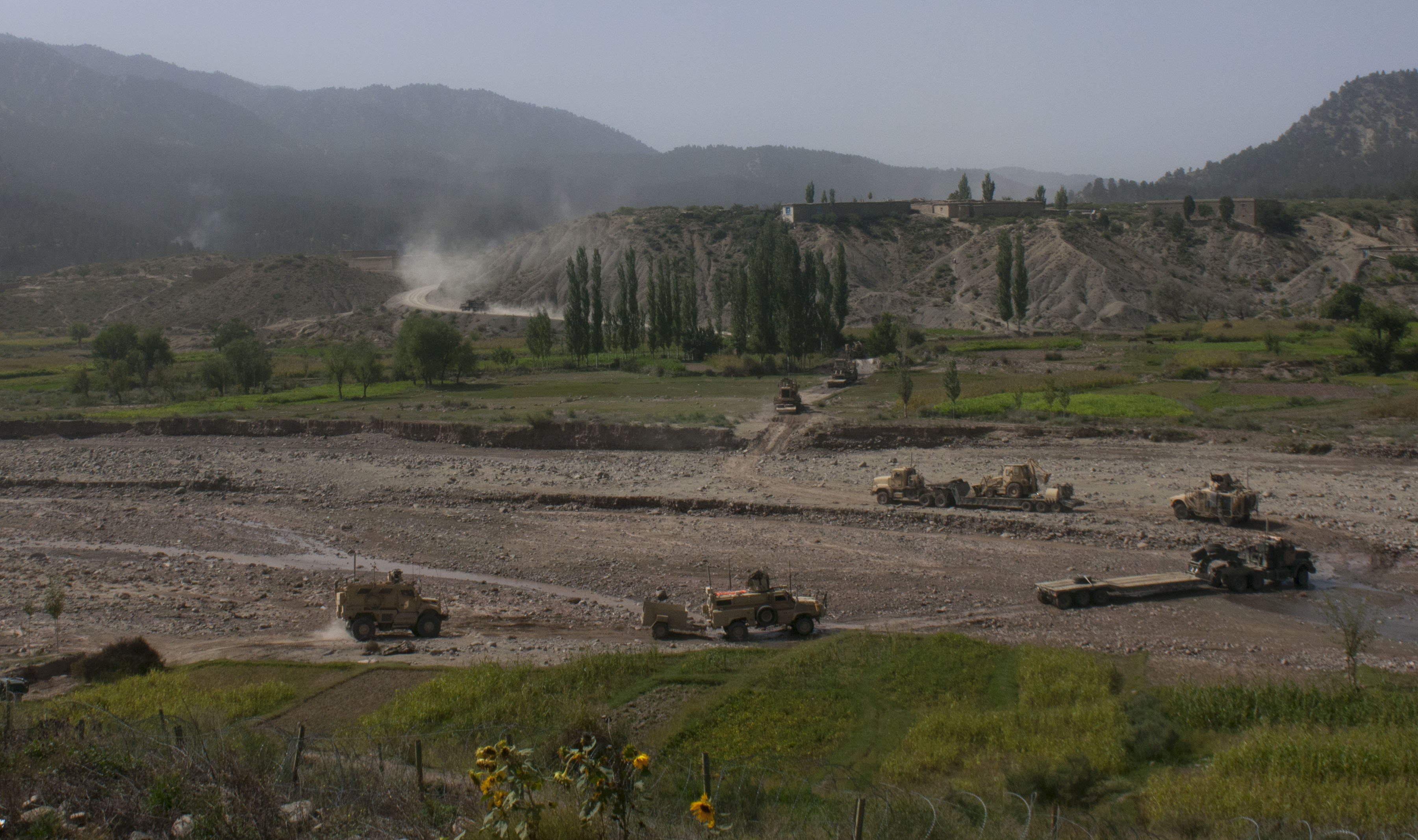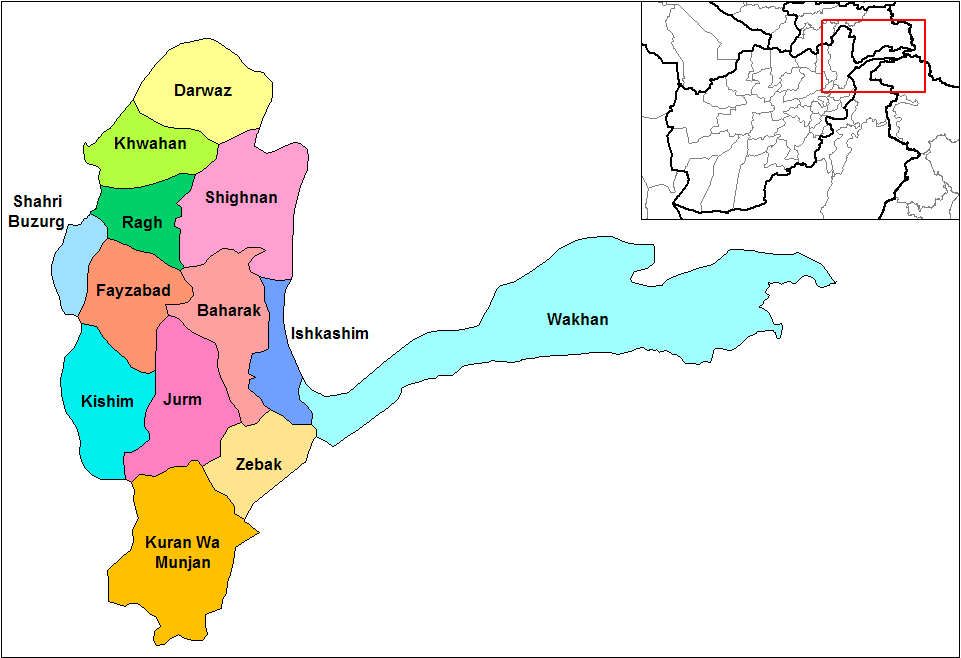|
Zerok
Zēṛōk, also known as Ziruk, () is the main town of Zerok District in Paktika Province, Afghanistan. It is located within the heart of Zadran land on the main Khost-Urgun road. History On 5 May 1978, two Hezbi Islami members, Jalaludin Haqqani and Aziz Khan, preached at the local mosque after the Friday prayer. They called to the congregants to fight against the governments that they deemed as infidels that made the Afghans who believed in gods insecure. Subsequently, Haqqani and Khan mobilized the mobs, and they attacked the local government offices. The attack led to the death of a high-ranking official and the disarmament of the local army. As a result, Zerok fell to the Hezbi Islami's hand, making this settlement its first territory within Afghanistan. See also * Khost * Loya Paktia Lōya Paktiā (; lit. Greater Paktia) is a historical and cultural region of Afghanistan, comprising the modern Afghan provinces of Khost, Paktia, and Paktika, as well as parts of Log ... [...More Info...] [...Related Items...] OR: [Wikipedia] [Google] [Baidu] |
Zerok District
Zerok District (), also spelled Zirok, is a district of Paktika Province that once was a part of Paktia, Afghanistan. The main town is Zerok located on the main Khost-Urgun road. Zerok is a remote district of Paktika province bordered to the east by Spera District of Khost province, to the southwest by Nika District, to the west by Urgun District and to the north by Waziristan. The district has a population of roughly 43,190. The district is within the heartland of the Zadran tribe of Pashtuns. The people speak Pashto with Zadran accent. Demographics Tribally, the people of Zerok are anikhon Khail, but there are some sub-tribes including: * Soorai (سوری) * Schawzai (شوزی) * Madakai (مدکی) * Alamai (عالمی) * Khudkai (خودکی) * Inbikai (انبکی) * Dabb (ډاب کلی) Dabb is the capital (district centre) of Zerok district. It hosts the District Governor's office, the police headquarters, and a US Forward Operating Base (FOB). Some people live ou ... [...More Info...] [...Related Items...] OR: [Wikipedia] [Google] [Baidu] |
Paktika Province
Paktika (Pashto: ) is one of the 34 provinces of Afghanistan, located in the eastern part of the country. Forming part of the larger Loya Paktia region, Paktika has a population of about 789,000 residents, who are mostly ethnic Pashtuns but smaller communities of Tajiks and others may also be found in the province. The town of Sharana serves as the provincial capital, while the most populous city is Urgun. In 2021, the Taliban gained control of the province during the 2021 Taliban offensive. Geography Paktika sits adjacent to the Durand Line border between Pakistan and Afghanistan. It is bordered by the Khost and Paktia provinces to the north. The western border is shared with the provinces of Ghazni and Zabul. The South Waziristan and North Waziristan agencies are to the east of Paktika, while Zhob District of the Balochistan province of Pakistan borders it the southeast. The Shinkay Hills run through the center of Paktika; Toba Kakar Range runs along the border with Pa ... [...More Info...] [...Related Items...] OR: [Wikipedia] [Google] [Baidu] |
Districts Of Afghanistan
The districts of Afghanistan, known as ''wuleswali'' (, ''wuləswāləi''; , ''wuləswālī''; ''ulasvolik''), are secondary-level administrative units, one level below Provinces of Afghanistan, provinces. The Afghan government issued its first district map in 1973. It recognized 325 districts, counting ''wuleswalis'' (districts), ''alaqadaries'' (sub-districts), and ''markaz-e-wulaiyat'' (provincial center districts). In the ensuing years, additional districts have been added through splits, and some eliminated through merges. In June 2005, the Afghan government issued a map of 398 districts. It was widely adopted by many information management systems, though usually with the addition of ''Sharak-e-Hayratan'' for 399 districts in total. It remains the ''de facto'' standard as of late 2018, despite a string of government announcements of the creation of new districts. The latest announced set includes 421 districts. The country's Central Statistics Office (CSO) and the Indepe ... [...More Info...] [...Related Items...] OR: [Wikipedia] [Google] [Baidu] |
Zadran (Pashtun Tribe)
The Zadran ( ''dzadrāṇ''; pronounced ''dzādroṇ'' in the Khost-Paktia dialect), also spelled Dzadran or Jadran, Jandran, zadroon, is a Pashtun tribe that inhabits the Loya or greater Paktia region in southeastern Afghanistan (Khost, Paktia, and Paktika provinces) and Kurram Agency parts of Waziristan in neighboring Pakistan. "Zadran: Pashtun tribe mainly residing in the “Zadran Arc” a 9-district area encompassing portions of the Khost, Paktia, and Paktika and Pakistan’s Kpk Balochistan Punjab provinces." The Zadran’s are a branch of the Karlani tribal confederacy. They are the largest Pashtun tribal group in Afghanistan's mountainous southeastern region, usually found in areas that are unsuitable for settled agricultural production. They have a reputation for militancy dating to the Soviet–Afghan War. Well-known Taliban fighter Jalaluddin Haqqani, who in later years headed the Haqqani network, is of the Zadran tribe himself, though he is recognized for ending ... [...More Info...] [...Related Items...] OR: [Wikipedia] [Google] [Baidu] |
Khost
Khōst () is the capital of Khost Province in Afghanistan. It is the largest city in the southeastern part of the country, and also the largest in the region of Loya Paktia. To the south and east of Khost lie Waziristan and Kurram Agency, Kurram in Pakistan. Khost is the home of Shaikh Zayed University. The Khost Airport is located in the Eastern Area Command (RAAF), eastern area of the city. Geography Khost is located about 150 kilometres south of Kabul. Khost lies on a plateau not below in elevation that extends to the east for about until the Pakistan border. Thirty kilometres, to the north the peaks rise up to while farther south away from the border, the average is around 1,800 m. Climate Khost has a semi-arid climate (Köppen climate classification, Köppen ''BSk'' though very close to qualifying as ''BSh''). Khost is located in the "Khost Bowl", a valley with lower elevation than the surrounding highlands. The geography afforded more moderate weather conditions. With a ... [...More Info...] [...Related Items...] OR: [Wikipedia] [Google] [Baidu] |
Loya Paktia
Lōya Paktiā (; lit. Greater Paktia) is a historical and cultural region of Afghanistan, comprising the modern Afghan provinces of Khost, Paktia, and Paktika, as well as parts of Logar7 Deadly Scenarios: A Military Futurist Explores the Changing Face of War in the 21st Century Andrew Krepinevich, Random House Digital, Inc., 2010, , ''... Paktia was once a unified province with Khost and Paktika in southeast Afghanistan. The three provinces are now referred to as 'Loya Paktia', which means 'The Greater Paktia' ...'' and compromises Kurram, Bannu and [...More Info...] [...Related Items...] OR: [Wikipedia] [Google] [Baidu] |
Country
A country is a distinct part of the world, such as a state, nation, or other political entity. When referring to a specific polity, the term "country" may refer to a sovereign state, state with limited recognition, constituent country, or dependent territory. Most sovereign states, but not all countries, are members of the United Nations. There is no universal agreement on the number of "countries" in the world, since several states have disputed sovereignty status or limited recognition, and a number of non-sovereign entities are commonly considered countries. The definition and usage of the word "country" are flexible and have changed over time. '' The Economist'' wrote in 2010 that "any attempt to find a clear definition of a country soon runs into a thicket of exceptions and anomalies." Areas much smaller than a political entity may be referred to as a "country", such as the West Country in England, "big sky country" (used in various contexts of the American We ... [...More Info...] [...Related Items...] OR: [Wikipedia] [Google] [Baidu] |
Provinces Of Afghanistan
The provinces of Afghanistan ( ''Wilayah, wilāyat'') are the primary administrative divisions. Afghanistan is divided into 34 provinces. Each province encompasses a number of Districts of Afghanistan, districts or usually over 1,000 villages. Provincial governors played a critical role in the reconstruction of the Afghan state following the creation of the new government under Hamid Karzai. According to international security scholar Dipali Mukhopadhyay, many of the provincial governors of the western-backed government were former warlords who were incorporated into the political system. Provinces of Afghanistan Administrative The following table lists the province, capital, number of districts, UN region, region, ISO 3166-2:AF code and license plate code. Demographic The following table lists the province, population in 2024, area in square kilometers and population density. Regions of Afghanistan The following tables summarize data from the demographic ... [...More Info...] [...Related Items...] OR: [Wikipedia] [Google] [Baidu] |
Afghanistan
Afghanistan, officially the Islamic Emirate of Afghanistan, is a landlocked country located at the crossroads of Central Asia and South Asia. It is bordered by Pakistan to the Durand Line, east and south, Iran to the Afghanistan–Iran border, west, Turkmenistan to the Afghanistan–Turkmenistan border, northwest, Uzbekistan to the Afghanistan–Uzbekistan border, north, Tajikistan to the Afghanistan–Tajikistan border, northeast, and China to the Afghanistan–China border, northeast and east. Occupying of land, the country is predominantly mountainous with plains Afghan Turkestan, in the north and Sistan Basin, the southwest, which are separated by the Hindu Kush mountain range. Kabul is the country's capital and largest city. Demographics of Afghanistan, Afghanistan's population is estimated to be between 36 and 50 million. Ancient history of Afghanistan, Human habitation in Afghanistan dates to the Middle Paleolithic era. Popularly referred to as the graveyard of empire ... [...More Info...] [...Related Items...] OR: [Wikipedia] [Google] [Baidu] |
Urgun
Urgun () is the main town of the Urgun District of Paktika Province, Afghanistan. With an estimated population of 10,665, TipTopGlobe.com. Urgun is the largest city of Paktika, while Urgun District, with a population of 89,718, is also the most populous district of the province. Urgun historically used to be the capital of Paktika, but in the 1970s, the capital was shifted from Urgun to Sharana in the west because Urgun was not easily accessible from the main Kabul–Kandahar Highway. Names The town of Urgun is also called ''Loy Urgun'' (), "Greater Urgun". Like many place names in Af ...[...More Info...] [...Related Items...] OR: [Wikipedia] [Google] [Baidu] |
Hezbi Islami
Hezb-e-Islami (also ''Hezb-e Islami'', ''Hezb-i-Islami'', ''Hezbi-Islami'', ''Hezbi Islami''), lit. Islamic Party, was an Islamist organization that was commonly known for fighting the Communist Government of Afghanistan and their close ally the Soviet Union. Founded and led by Gulbuddin Hekmatyar, it was established in Afghanistan in 1976. It grew out of the Muslim Youth organization, an Islamist organization founded in Kabul by students and teachers at Kabul University in 1969 to combat communism in Afghanistan. Its membership was drawn from ethnic Pashtuns, and its ideology from the Muslim Brotherhood and Abul Ala Maududi's Jamaat-e-Islami. Another source describes it as having splintered away from Burhanuddin Rabbani Burhānuddīn Rabbānī (; 20 September 1940 – 20 September 2011) was an Afghanistan, Afghan politician and teacher who served as the sixth president of Afghanistan from 1992 to 1996, and again from November to December 2001 (in exile from 199 ...' ... [...More Info...] [...Related Items...] OR: [Wikipedia] [Google] [Baidu] |
Jalaludin Haqqani
Jalaluddin Haqqani () (1939 – 3 September 2018) was an Afghan insurgent commander who founded the Haqqani network, an insurgent group who fought in guerilla warfare against US-led NATO forces and the former Islamic Republic of Afghanistan government that they supported. He distinguished himself as an internationally sponsored insurgent fighter in the 1980s during the Soviet–Afghan War, including in Operation Magistral. He earned U.S. praise and was called "goodness personified" by the U.S. officials. US officials have admitted that during the Soviet–Afghan War, he was a prized asset of the Central Intelligence Agency (CIA). Former U.S. president Ronald Reagan called Jalaluddin Haqqani a "freedom fighter" during the Soviet–Afghan War. By 2004, he was directing pro-Taliban insurgent group to launch a holy war in Afghanistan. In 2016, U.S. Lieutenant General John W. Nicholson Jr. claimed that the U.S. and NATO were not targeting Haqqani's network in Afghanistan. Media re ... [...More Info...] [...Related Items...] OR: [Wikipedia] [Google] [Baidu] |




